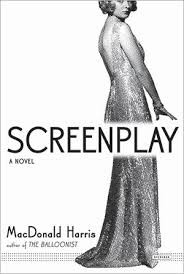
The novelist MacDonald Harris was in real life Donald Heiney, a sailor from Newport Beach and co-founder of the UC Irvine graduate creative writing program, that nifty workshop which has produced a whole bunch of terrific novelists and short story writers, nonfiction scribes and teachers. He died in 1993 yet is having a nice run at immortality, every artist's goal, with first the recent publication of The Carp Castle and now, the reissue of Screenplay, his 1982 novel about, as they say, silent movie culture as imagined by a kind of Through the Looking Glass character whose journey to the other side of the screen plays around with identity and the construction of unreality that is image and words. It's “about” a lot more, of course. And, yes, there are a number of reasons to recommend this book: for its So Cal setting, its author's connection to the region, the book's edgy meta-fictional construct as imagined nearly forty years ago, the subject of movie illusion, and its truly creepy and wonderful protagonist, as well as the recommendation from British actor-director Simon Callow, who wrote the afterword, possibly the most enthusiastic review of a novel I've ever read.
]
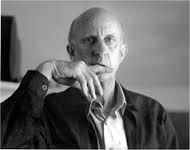
Synchronicity may be the wrong word, but whatever was in the water in the early 1980s might have been what Don Heiney was drinking, too. I am going to argue here (not very fiercely) that Screenplay might be read as a prescient take on the Reagan Years, but then I am obsessed with same, which you know if you have read this blog. The introduction of then-new media (USA Today!), the national self-hate meets self-regard, the ascendancy of wealth, scorning of the poor and homeless, the reactionary politics, super-duper patriotism (“USA, USA”) all of it along with Yuppies and “Lifestyles of the Rich and Famous” led to a lot of art about Self, and about illusion and the personalization of all experience. Paul Brodeur's 1970 novel The Stuntman was made into a film at about this time, and later films-within-films as shot by Woody Allen and others seemed to arrive out of this same cultural moment. Add plastic surgery, conspicuous consumption, designer jeans and t-shirts, if you can imagine this, produced in the millions and billions for those who could not afford the actual line of clothing, but with the name (DKNY) and logo of the real thing, and, yes, the image trumps reality.
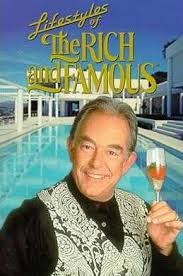
So that you can read this novel as the story of an emotionally remote and yet narcissistic bachelor orphan (love it!) named, yes, Alys (as in Alice who gets mail in Wonderland), lives in a sort of onanistic Playboy mansion cum haunted house, and extends his self-love to love of what is most elegantly and anachronistically contrived and fake, which is to say early silent films. He is a creepy weirdo, charming in his way, attractive, wealthy, estranged. Think Tony Perkins in the perfect if now impossible casting choice for lead. Not to give anything at all away, but his fascination with the earliest incarnation of images on the screen is framed (see what I did there) in a big crush on Moira Silver (as in screen), and so begins his adventure into the looking glass of movies and movie making, all of it nicely situated on the streets and boulevards, theaters, schools, studios of Los Angeles, with a foray into, yes, Orange County, too.
There's more, and it's what delighted me in a story which, despite Mr. Callow's enthusiasm, might feel too familiar all these years later. But before I get all political on you, those details and Harris's elegant and psychologically true staging of the premise is what makes the novel just plain fun. There's a
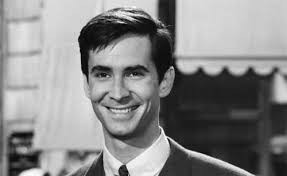
mysterious guide who seems to have time-traveled, a sidekick unappreciated, and of course the prose of extreme gorgeous self-consciousness needed to believe and even empathize with a selfish protagonist for whom we are compelled to find empathy. When he begins to understand just how engaged or invited or absorbed he is in the project, Alys pauses to consider his falling into this particular looking glass:
To begin with I asked myself in what I hoped was a detached and objected tone of self-analysis, why was I so fascinated with Moira? To this, I could only reply that she seemed in some way to correspond to some latent image in my memory, a gauzy other-self which had always been there and had only been brought to the surface by the photograph.
Latent image, indeed. As a guide, our narrator is unable, unwilling to be anything but honest, notwithstanding his unpleasant and solipsistic personality, so that he is a profoundly, winningly reliable narrator in a most entertainingly unreliable fabulist premise. This is catnip to Harris, who is gently, judiciously parceling out the ultimate in plot-driven conceit while dressing everybody up in scenes which are, of course, movie scenes, too. My own favorite is a kind of early hint at what's to come involving President. Lincoln's visit to the theater as captured in a singular silent movie.
There is of course a lot of Big Idea here, frankly less of interest to this reader (who shies away from Universal Philosophical Tropes) having to do with the nature of art, or Art. But, again, it all reads so wonderfully rich and arch, as if Harris is having a ball rolling out the required “willing suspension of disbelief” essay as giddily ironic dialogue between very unreal characters, one in particular who lives in both the on and off-screen worlds. At some point we are privy to a conversation about art as mental illness, but that seems right considering it arrives at that moment when Alys finds his way in to the film starring Moira fifty years earlier. So, fun house, movie house, nut house…all good, as the young kids say these days!
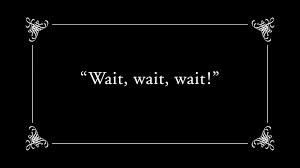
But what engages me most about the book, as a novel and as a historical artifact are two elements you might call experiential. First, is the fun of a novel turning into a screenplay, with the writing on the page (sentences, paragraphs) interrupted by the script of the movie into which Alys pushes himself, part of the wrinkle in screentime conceit. Harris's choreography actions in the silent movie with those of the characters (in book and film!) are lovely, with us seeing, as it were, behind the screen curtain, at what is required for the set-up and what is
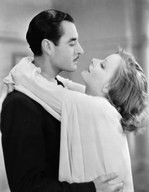
really happening with the pantomime that was this lovely if crude old theater. Second, to return to my promised point, this novel is important because of how it ends, and all that it takes to achieve that ending, a kind of emotionally sadistic Gothic allegory. I won't give those details away, though you will anticipate them, as the author intended, especially in the tone and personality of Alys and his consort, and the mysterious film director Nesselrode, and the subterranean Los Angeles wonderworld into which all have descended. It all evokes Poe and flickering black-and-white screen shadows and the comeuppance of vanity. Especially, for me, the cultural and political moment which might have been Harris's target in the early 1980's, which found the nation electing an old vampire as president and his bat as first lady, B-actors for Christ's sake, with their dyed hair and astrologers and gay fashion pals and the pandering to an illusory lost past where gay people do not exist. Don't get me started! All of it strikes me as very much informing the characterization of a selfish, creepy rich guy who installs mirrors in his bedroom, drives around old classic cars, affects a nobleman's posture and imagines how much better things were before “talkies,” with their necessarily abbreviated lines and often melodramatic plots and plot twists, which in this novel become twisted, if beautifully.
Screenplay, MacDonald Harris, Overlook, 272 pgs., $26.95
Andrew Tonkovich edits the West Coast literary journal Santa Monica Review and returns in spring 2015 to hosting the weekly books show Bibliocracy Radio on KPFK 90.7 FM in Southern California.

